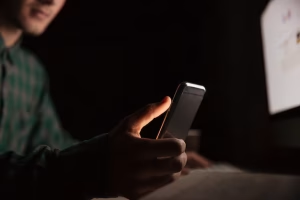When Lies Go Viral: The Legal and Human Fallout of the Mary Kate Cornett Case and ESPN's Pat McAfee
In an age where rumors can go viral before the truth even gets out of bed, the law is being pushed to its limits. The recent case of Mary Kate Cornett, a 19-year-old college freshman at the University of Mississippi, has reignited debate about how defamation, cyberbullying, and online harassment intersect with our existing legal frameworks.
What happened to Cornett is a cautionary tale not just of digital cruelty, but also of the urgent need to adapt our legal systems to the realities of internet virality.
1. Defamation in the Age of Amplification
Defamation law is built on the foundation that individuals should not suffer reputational harm due to false statements. In Cornett’s case, she was the subject of an outrageous and completely unverified rumor involving her and her boyfriend’s father.
Though she was not directly named in some media discussions, the specificity of the rumor allowed her to be identified quickly online.
What's going on at Ole Miss 😂😂#PMSLive pic.twitter.com/48ed4tI3ey
— Pat McAfee (@PatMcAfeeShow) February 26, 2025
False statements made publicly, especially when they lead to real-world harm, form the backbone of a potential defamation claim. For private individuals like Cornett, the threshold for proving defamation is lower: she must demonstrate that the statements were false, injurious, and made with at least negligence.
When public figures and influencers with massive followings share such content—even under the guise of entertainment—they may cross the line from commentary into actionable harm.
2. Cyberbullying: Where the Law Stands
What happened to Cornett also fits into the broader and fuzzier category of cyberbullying. Cyberbullying is not uniformly defined across jurisdictions, but it typically involves the use of digital communications to harass, intimidate, or threaten someone.
Mary Kate Cornett experienced an overwhelming wave of online abuse, with her phone number leaked, hate messages sent, and even a swatting incident targeting her family home.
Monica Uddin, Cornett's attorney, emphasized the severity of the situation, stating, "Defamation has existed for a long time. You can’t lie about someone with impunity—and that’s what has happened to Mary Kate."
Dr. Sameer Hinduja, a professor in the School of Criminology and Criminal Justice at Florida Atlantic University and Co-Director of the Cyberbullying Research Center, highlighted the challenges victims face in the digital age: "Being at the center of a viral scandal often subjects individuals to cyberbullying, harassment, and relentless public shaming. The barrage of negative comments... can lead to feelings of anxiety, depression, and isolation."
View this post on Instagram
While many states have enacted cyberbullying statutes, enforcement remains inconsistent, and laws often fail to address situations involving mass participation by strangers online.
The legal system struggles to hold individual posters accountable when harassment becomes a collective action, with anonymity and jurisdictional challenges further complicating matters.
3. Harassment by the Masses: Legal Gaps and Gray Areas
Cornett’s experience lays bare a painful reality: harassment doesn’t always come from a single individual. In the digital arena, harassment is often decentralized—a cascade of cruelty triggered by a single viral moment.
This raises the question: when thousands of anonymous users contribute to targeted abuse, who is legally responsible?
Currently, U.S. law does not offer a comprehensive remedy for harassment by the masses. Victims like Cornett are often left to pursue defamation claims against identifiable individuals or platforms, but the sheer scale and anonymity of coordinated online harassment often leave them with little recourse.
Civil suits against individual users are costly and impractical, while tech platforms largely remain shielded by Section 230 of the Communications Decency Act.
There is a growing call for reforms that would allow victims to obtain restraining orders, compel platforms to take faster action, or pierce anonymity in certain egregious cases. Until then, victims face a legal labyrinth with few exits.
4. Emotional Distress and the Legal Recognition of Mental Harm
The law has long recognized that extreme and outrageous conduct can cause emotional harm. Cornett’s story—nausea, sleeplessness, isolation, and anxiety severe enough to force her into online classes—is emblematic of the mental toll online defamation and harassment can exact.
Claims of Intentional Infliction of Emotional Distress (IIED) require plaintiffs to prove that the defendant’s conduct was extreme and outrageous, intended to cause distress, and did in fact cause severe emotional suffering. In digital cases, however, proving intent can be difficult, especially when the conduct is cloaked in humor, speculation, or claims of ignorance.
Nonetheless, Cornett’s willingness to testify and undergo deposition signals a potential shift: victims are increasingly prepared to meet the legal thresholds if it means reclaiming their narrative and dignity.
Mary Kate Cornett’s story is a stark reminder that behind every viral rumor is a real person. As online cruelty spreads faster than truth, it’s time for defamation laws and cyberbullying protections to catch up and truly protect people in the digital age.
More Articles from Lawyer Monthly
-
Death of South Korean Actor Kim Sae-ron Sparks Calls for Change in Social Media Culture
-
Texas Senate Unites to Combat AI-Generated Child Pornography





















